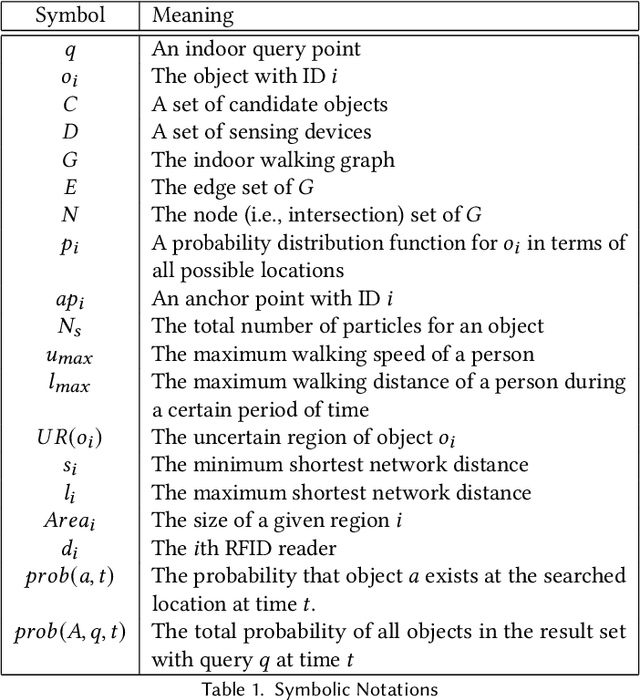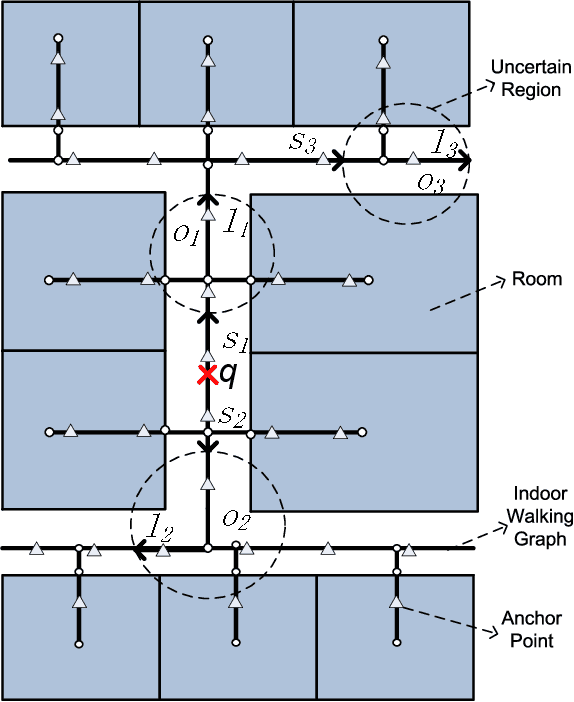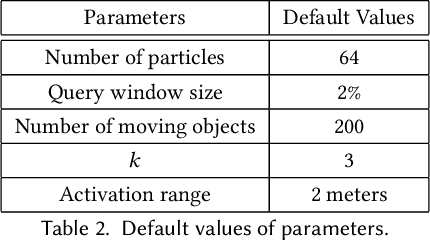Jiao Yu
RFID-Based Indoor Spatial Query Evaluation with Bayesian Filtering Techniques
Apr 02, 2022



Abstract:People spend a significant amount of time in indoor spaces (e.g., office buildings, subway systems, etc.) in their daily lives. Therefore, it is important to develop efficient indoor spatial query algorithms for supporting various location-based applications. However, indoor spaces differ from outdoor spaces because users have to follow the indoor floor plan for their movements. In addition, positioning in indoor environments is mainly based on sensing devices (e.g., RFID readers) rather than GPS devices. Consequently, we cannot apply existing spatial query evaluation techniques devised for outdoor environments for this new challenge. Because Bayesian filtering techniques can be employed to estimate the state of a system that changes over time using a sequence of noisy measurements made on the system, in this research, we propose the Bayesian filtering-based location inference methods as the basis for evaluating indoor spatial queries with noisy RFID raw data. Furthermore, two novel models, indoor walking graph model and anchor point indexing model, are created for tracking object locations in indoor environments. Based on the inference method and tracking models, we develop innovative indoor range and k nearest neighbor (kNN) query algorithms. We validate our solution through use of both synthetic data and real-world data. Our experimental results show that the proposed algorithms can evaluate indoor spatial queries effectively and efficiently. We open-source the code, data, and floor plan at https://github.com/DataScienceLab18/IndoorToolKit.
Computer-aided Recognition and Assessment of a Porous Bioelastomer on Ultrasound Images for Regenerative Medicine Applications
Jan 31, 2022Abstract:Biodegradable elastic scaffolds have attracted more and more attention in the field of soft tissue repair and tissue engineering. These scaffolds made of porous bioelastomers support tissue ingrowth along with their own degradation. It is necessary to develop a computer-aided analyzing method based on ultrasound images to identify the degradation performance of the scaffold, not only to obviate the need to do destructive testing, but also to monitor the scaffold's degradation and tissue ingrowth over time. It is difficult using a single traditional image processing algorithm to extract continuous and accurate contour of a porous bioelastomer. This paper proposes a joint algorithm for the bioelastomer's contour detection and a texture feature extraction method for monitoring the degradation behavior of the bioelastomer. Mean-shift clustering method is used to obtain the bioelastomer's and native tissue's clustering feature information. Then the OTSU image binarization method automatically selects the optimal threshold value to convert the grayscale ultrasound image into a binary image. The Canny edge detector is used to extract the complete bioelastomer's contour. The first-order and second-order statistical features of texture are extracted. The proposed joint algorithm not only achieves the ideal extraction of the bioelastomer's contours in ultrasound images, but also gives valuable feedback of the degradation behavior of the bioelastomer at the implant site based on the changes of texture characteristics and contour area. The preliminary results of this study suggest that the proposed computer-aided image processing techniques have values and potentials in the non-invasive analysis of tissue scaffolds in vivo based on ultrasound images and may help tissue engineers evaluate the tissue scaffold's degradation and cellular ingrowth progress and improve the scaffold designs.
 Add to Chrome
Add to Chrome Add to Firefox
Add to Firefox Add to Edge
Add to Edge